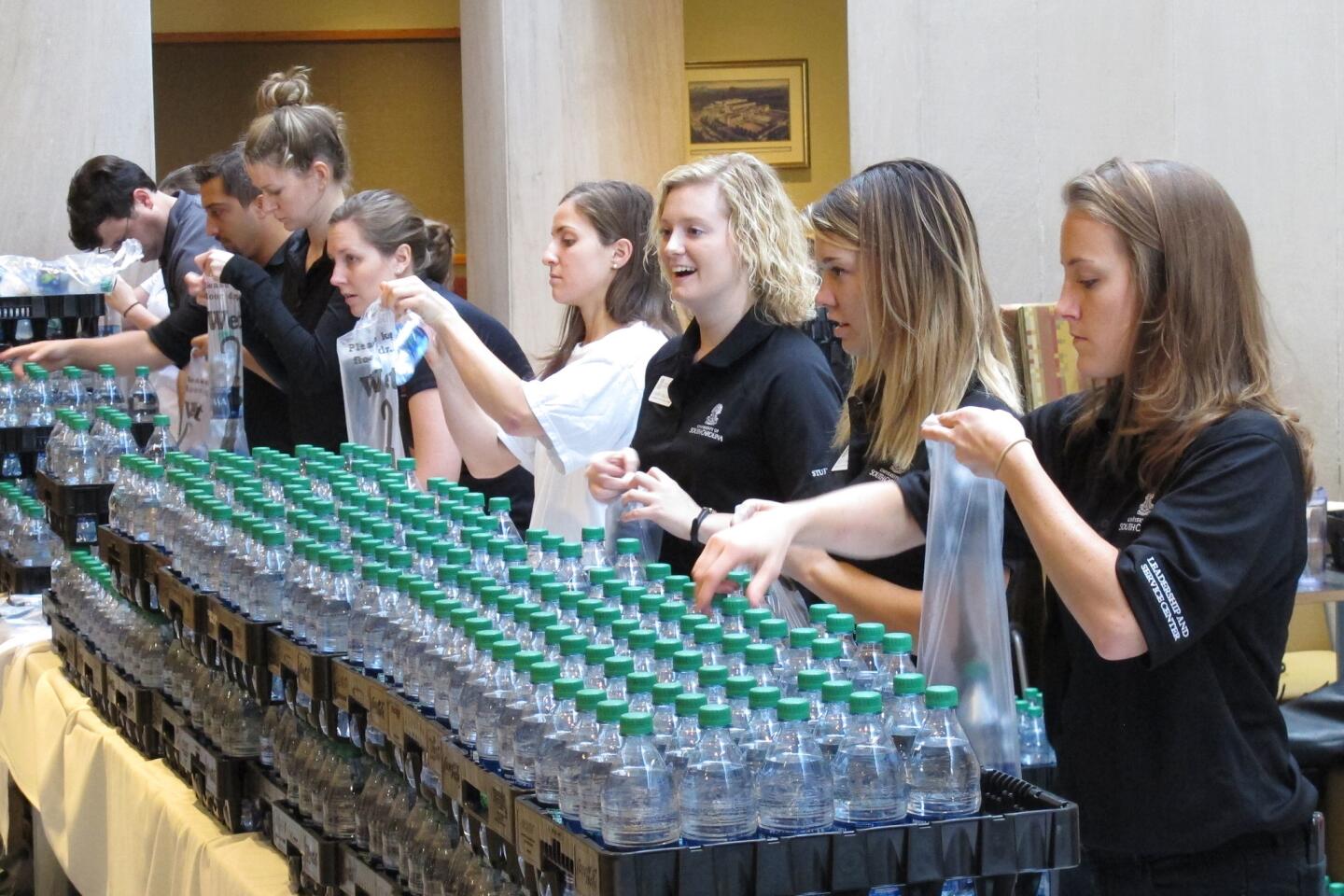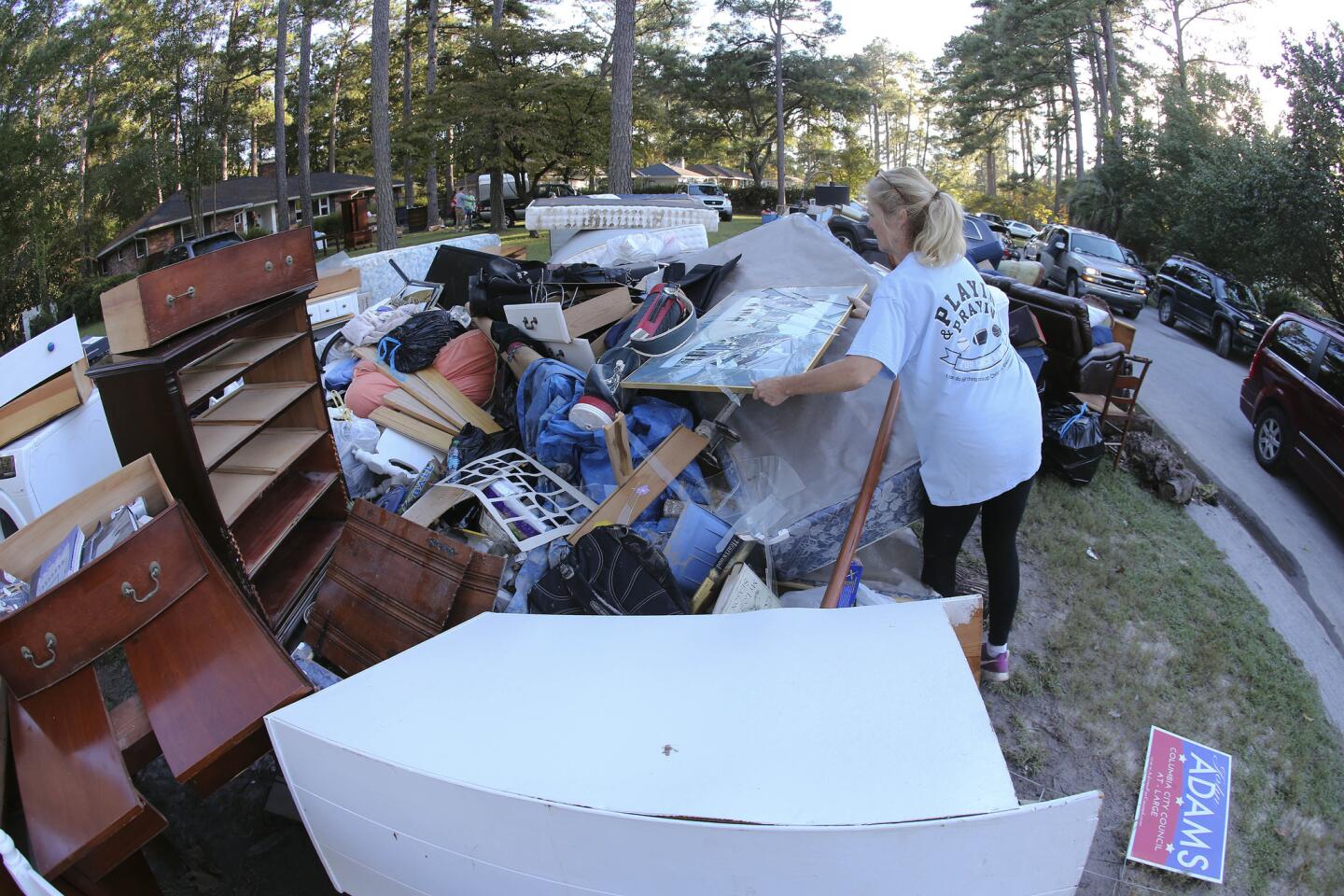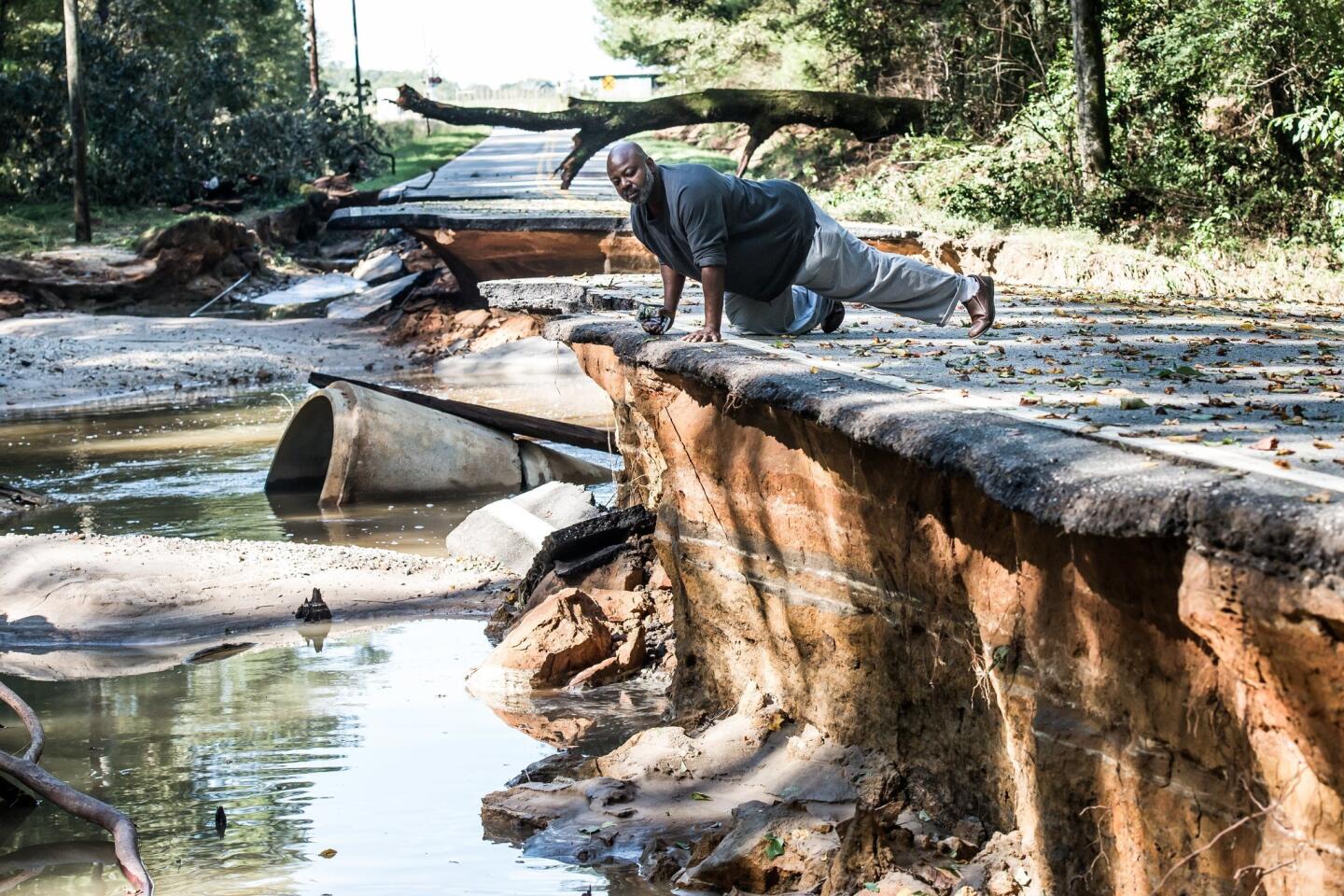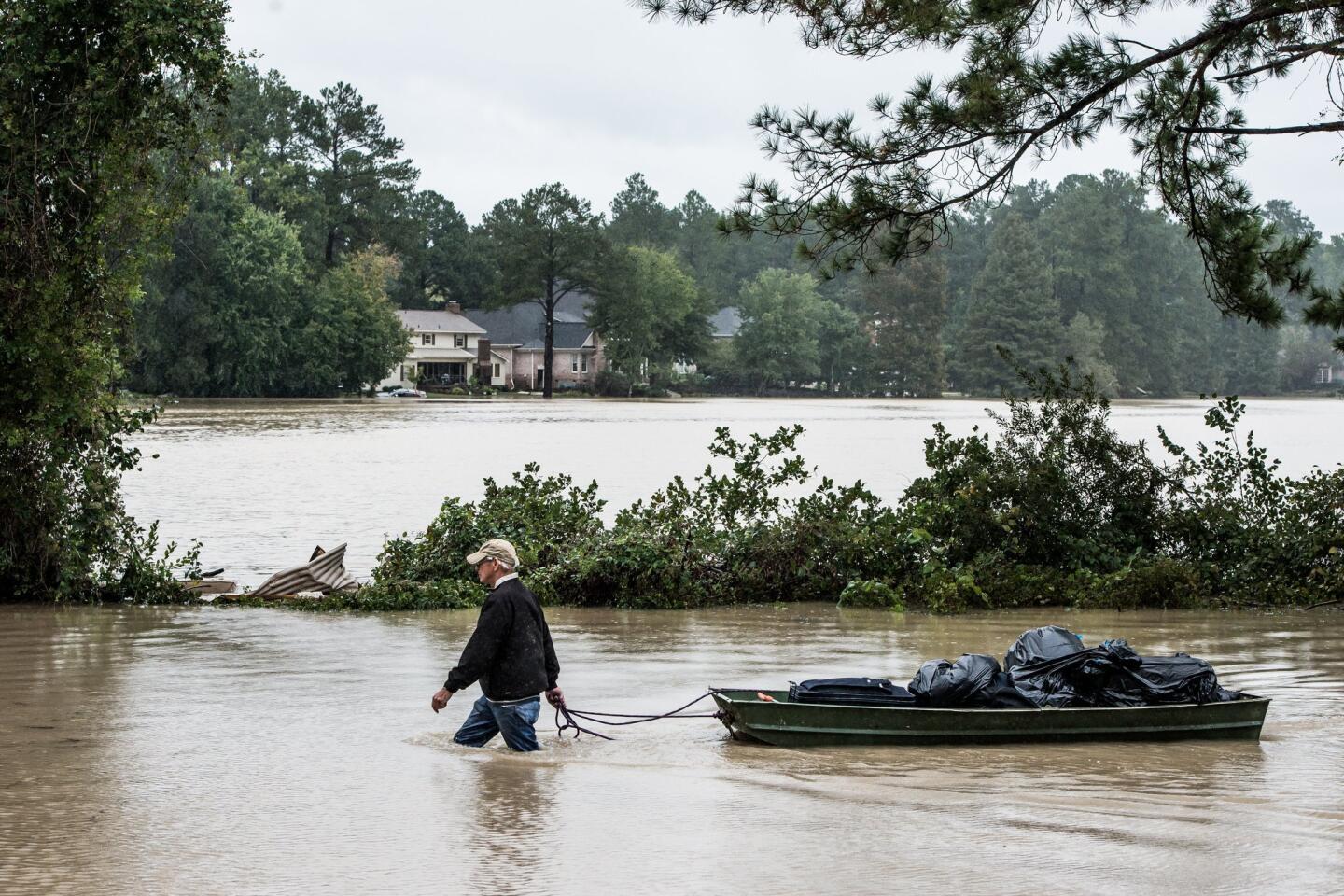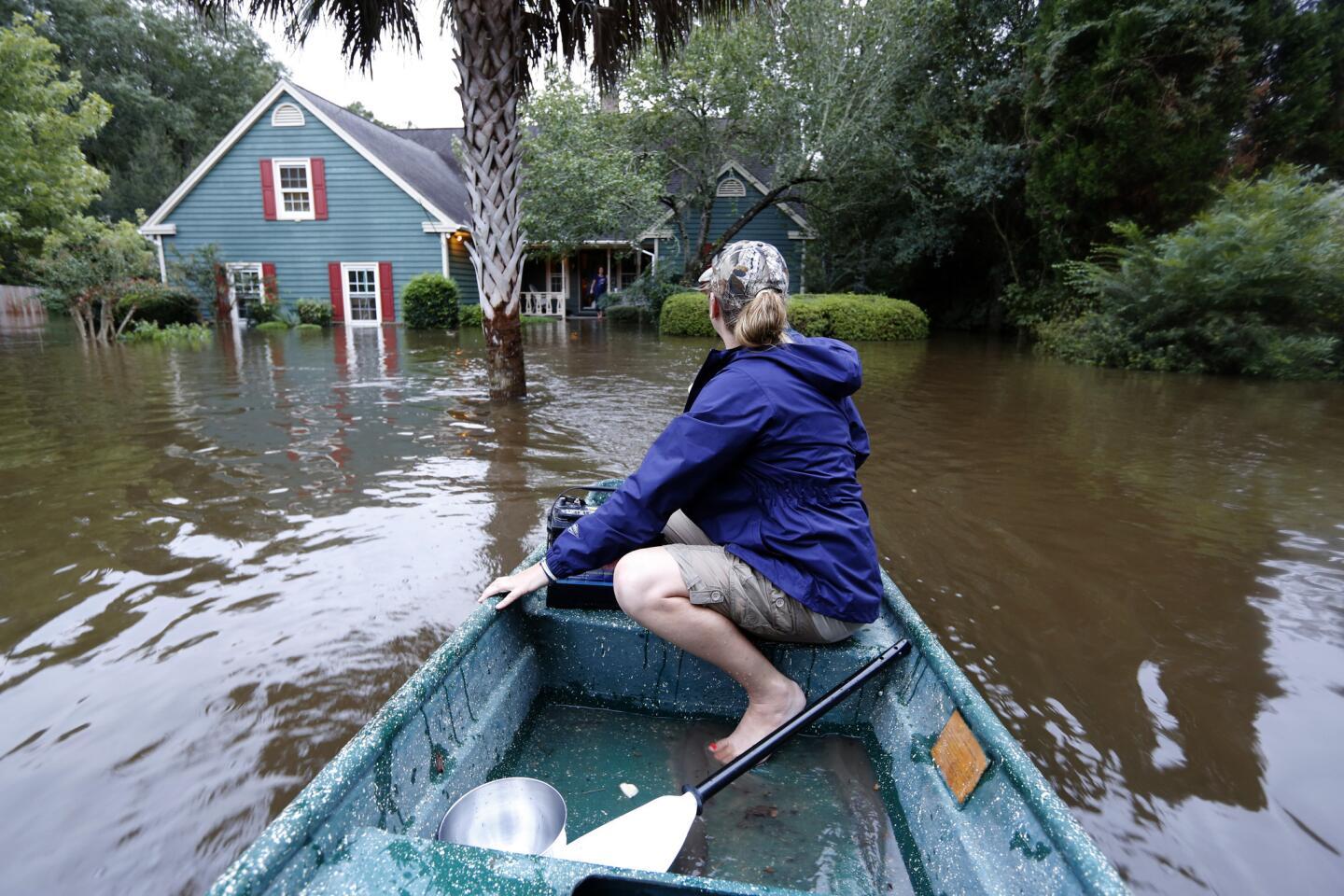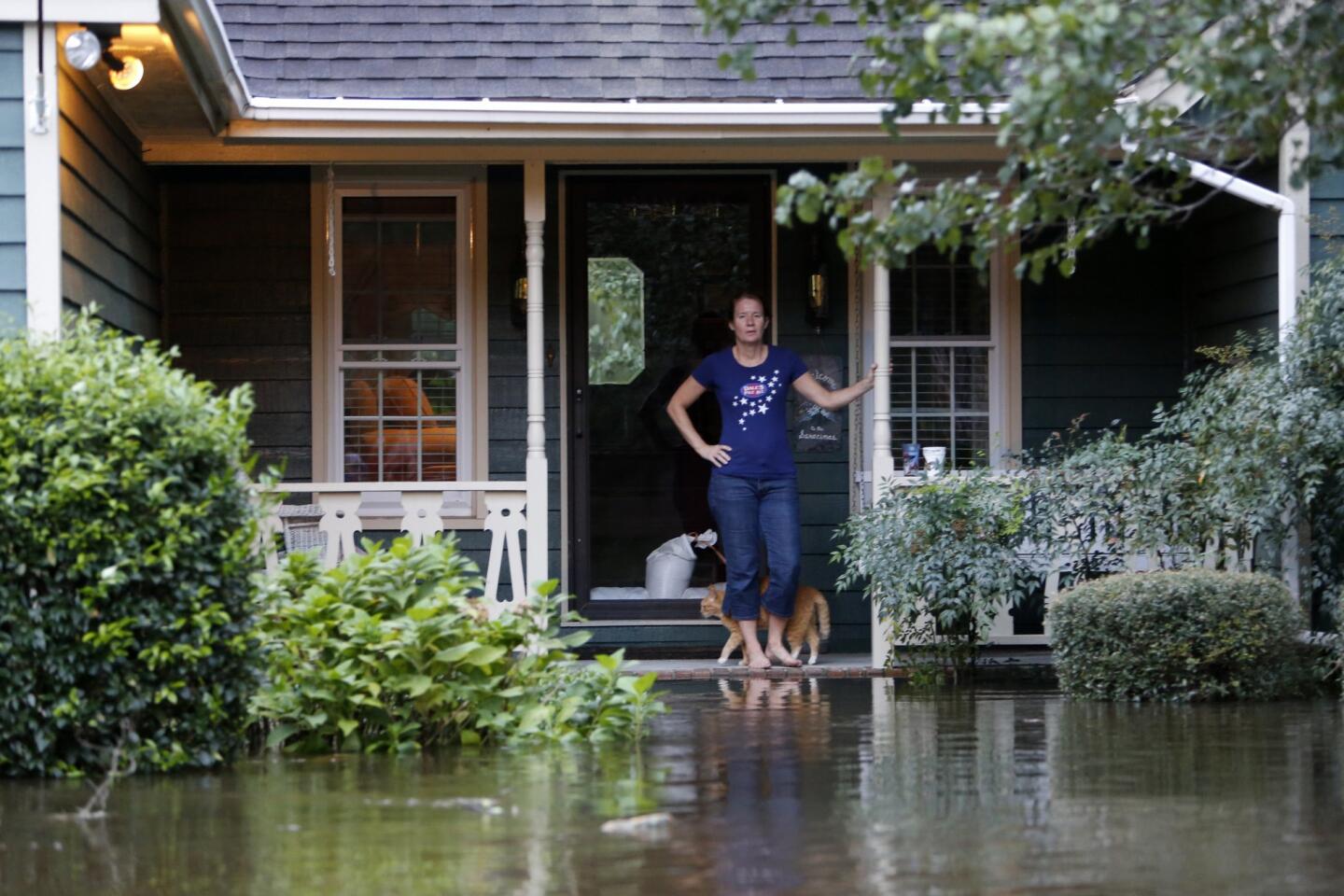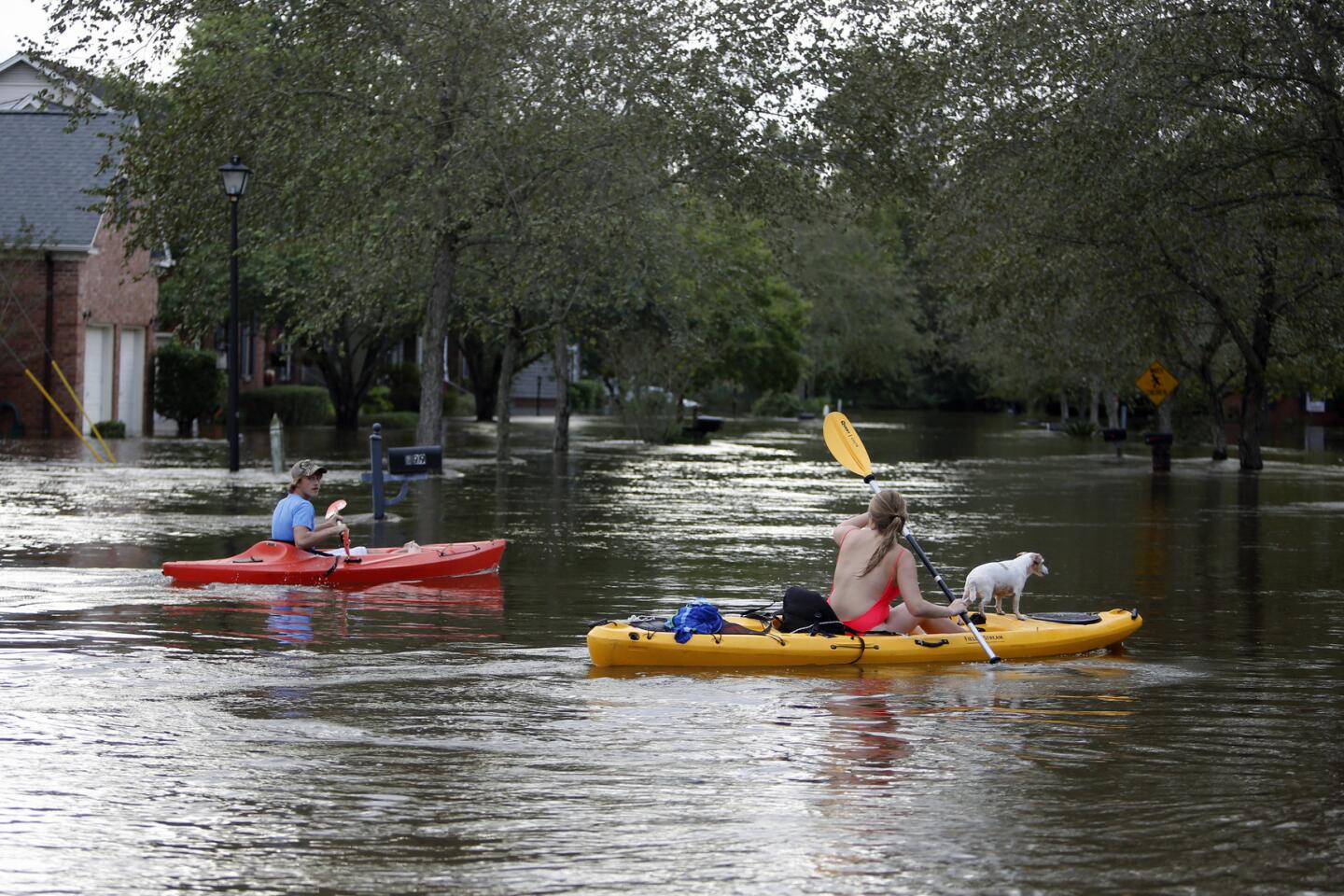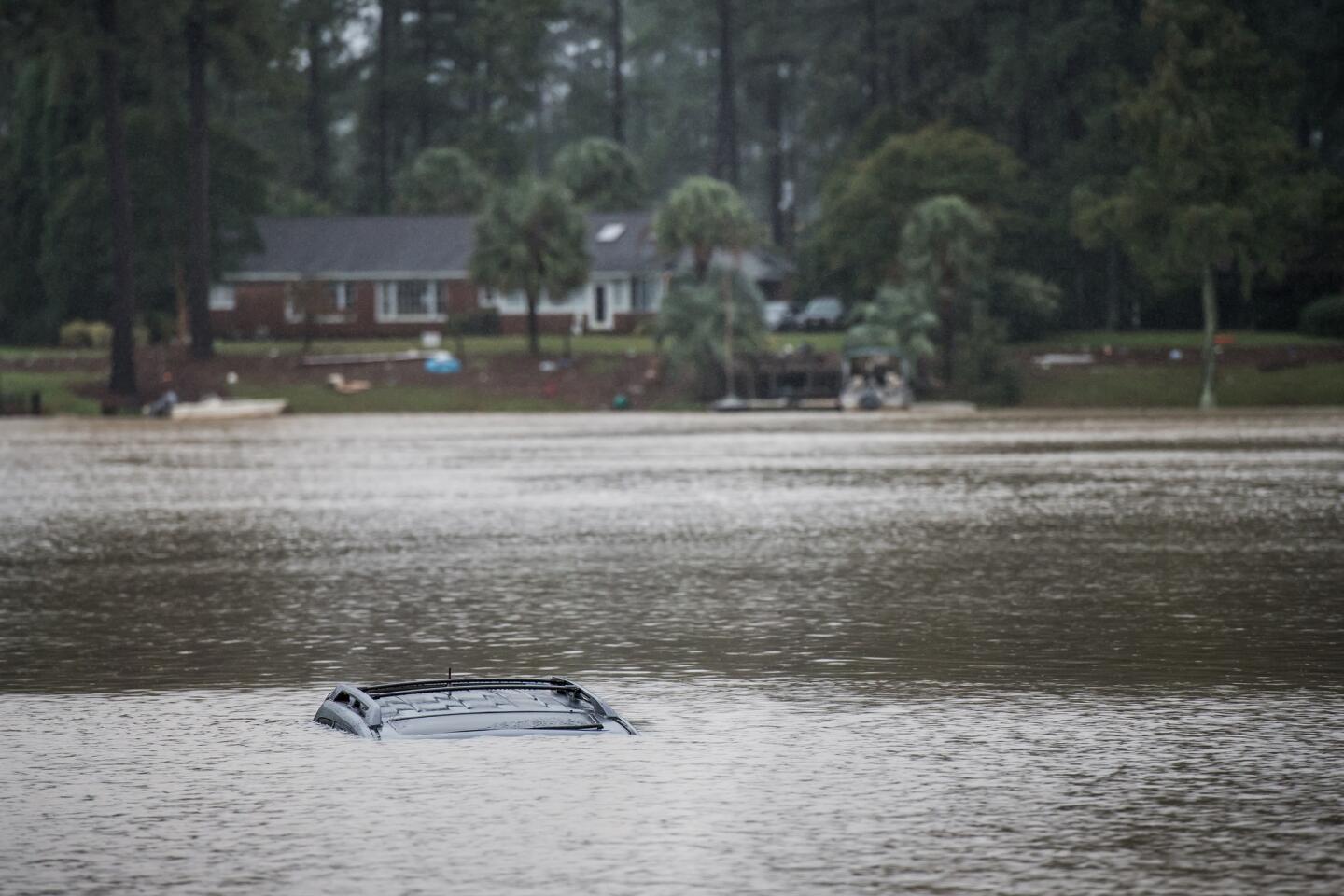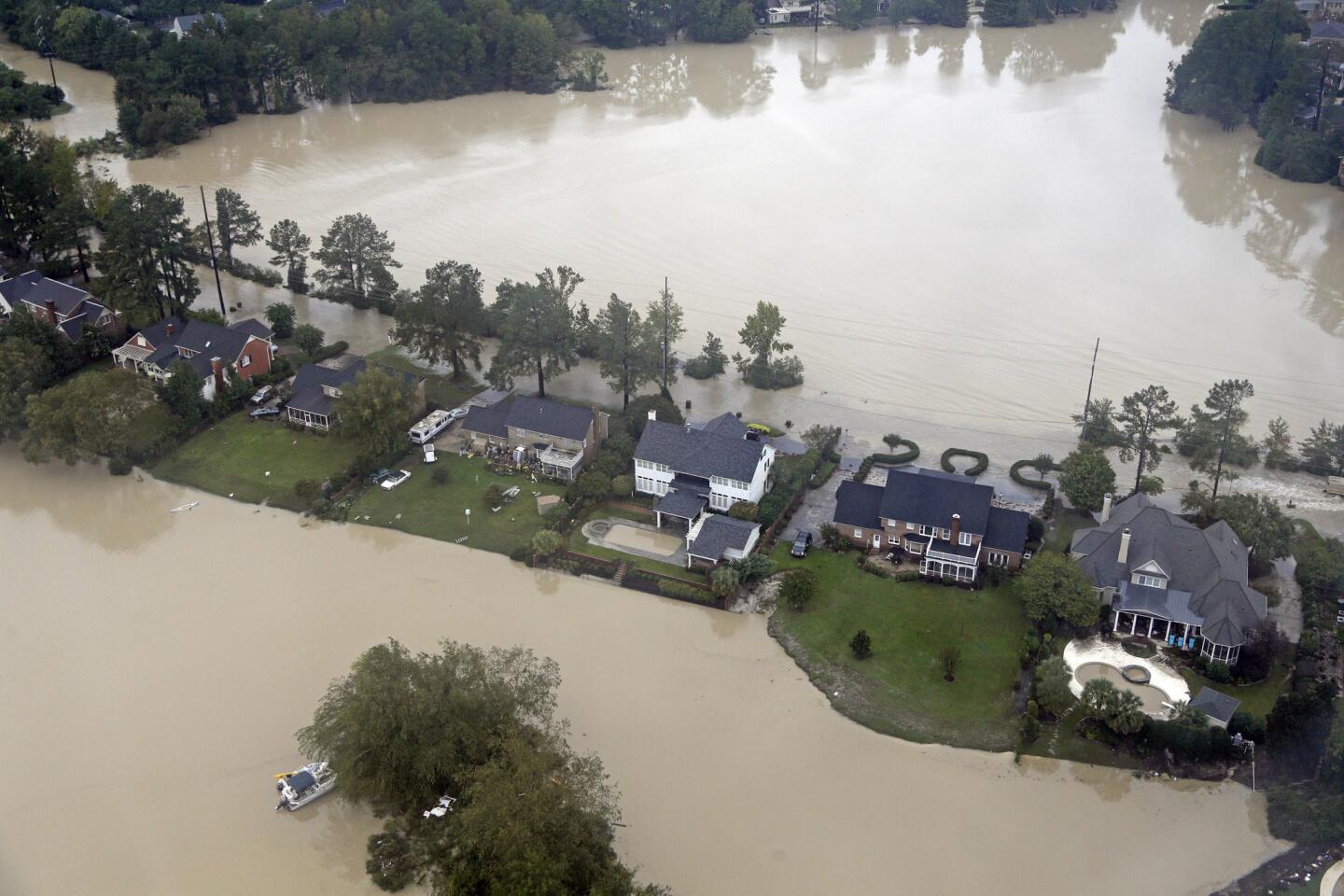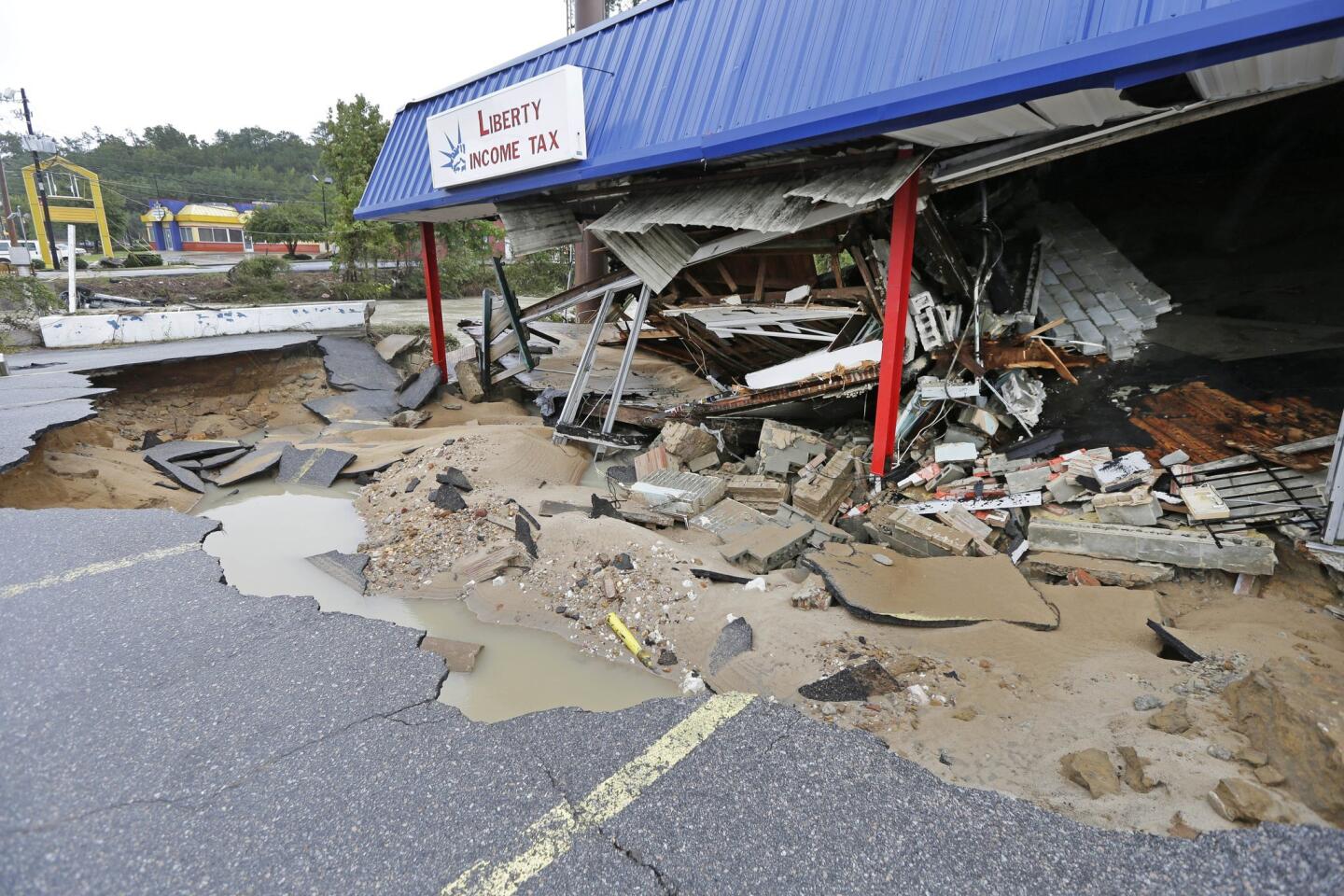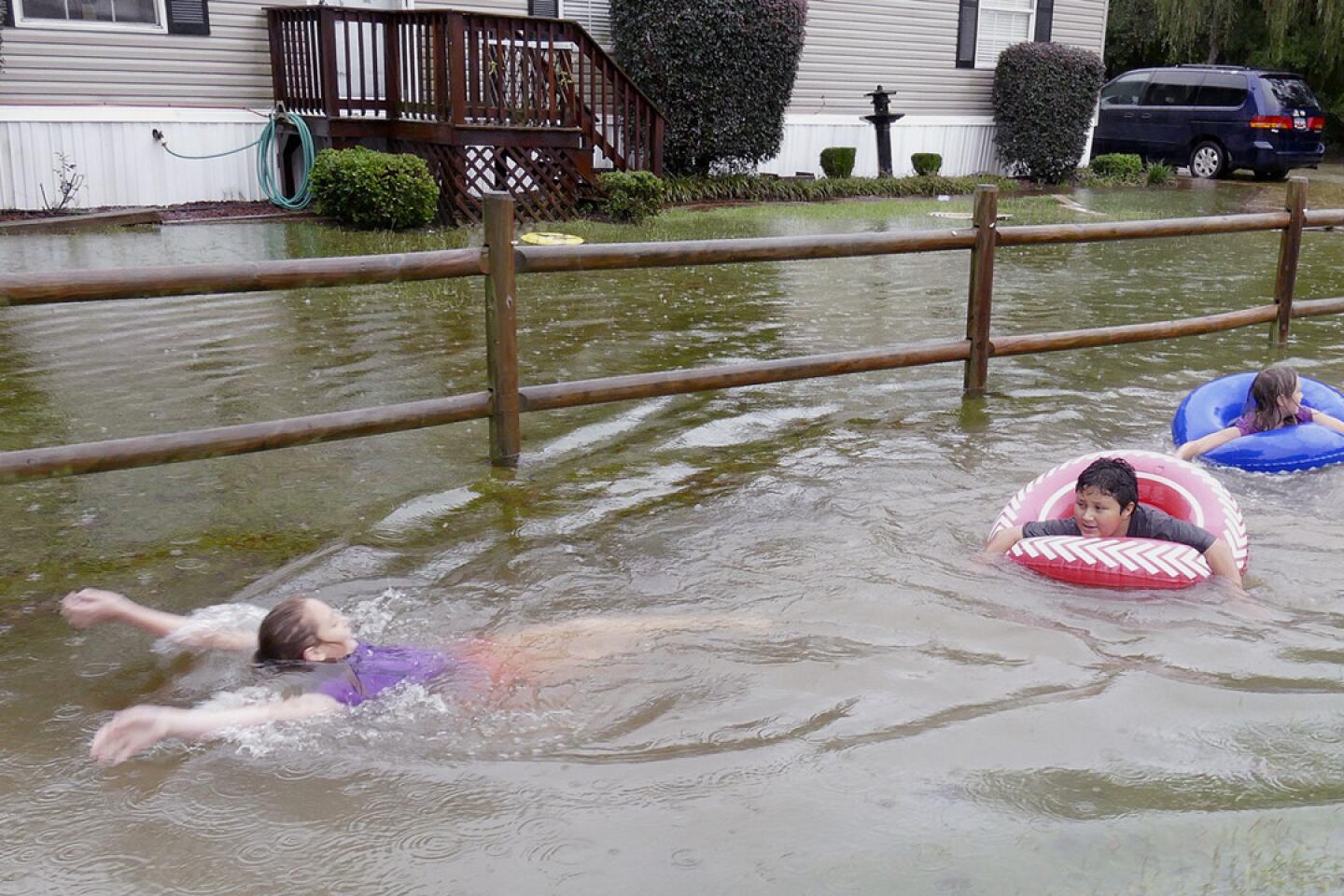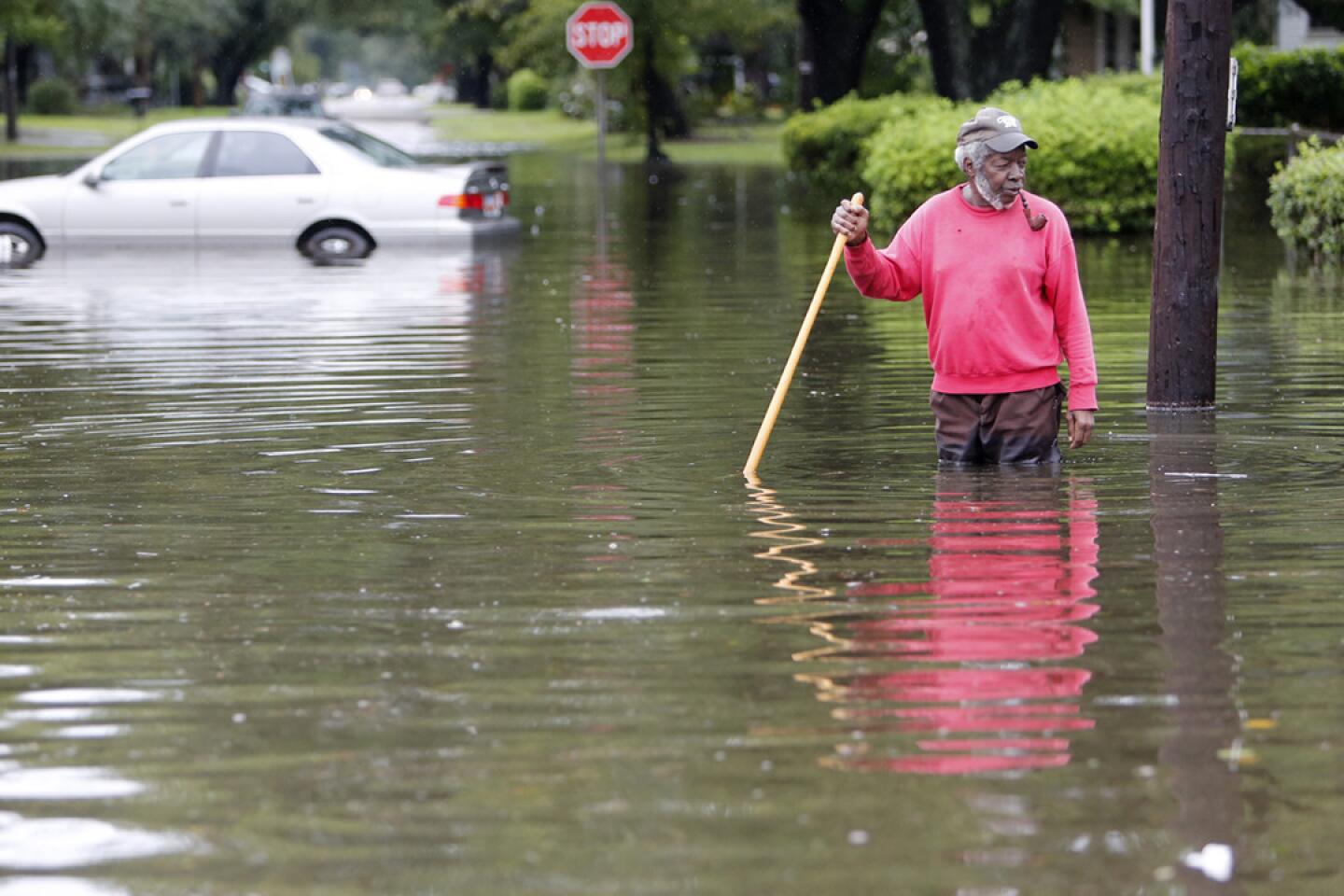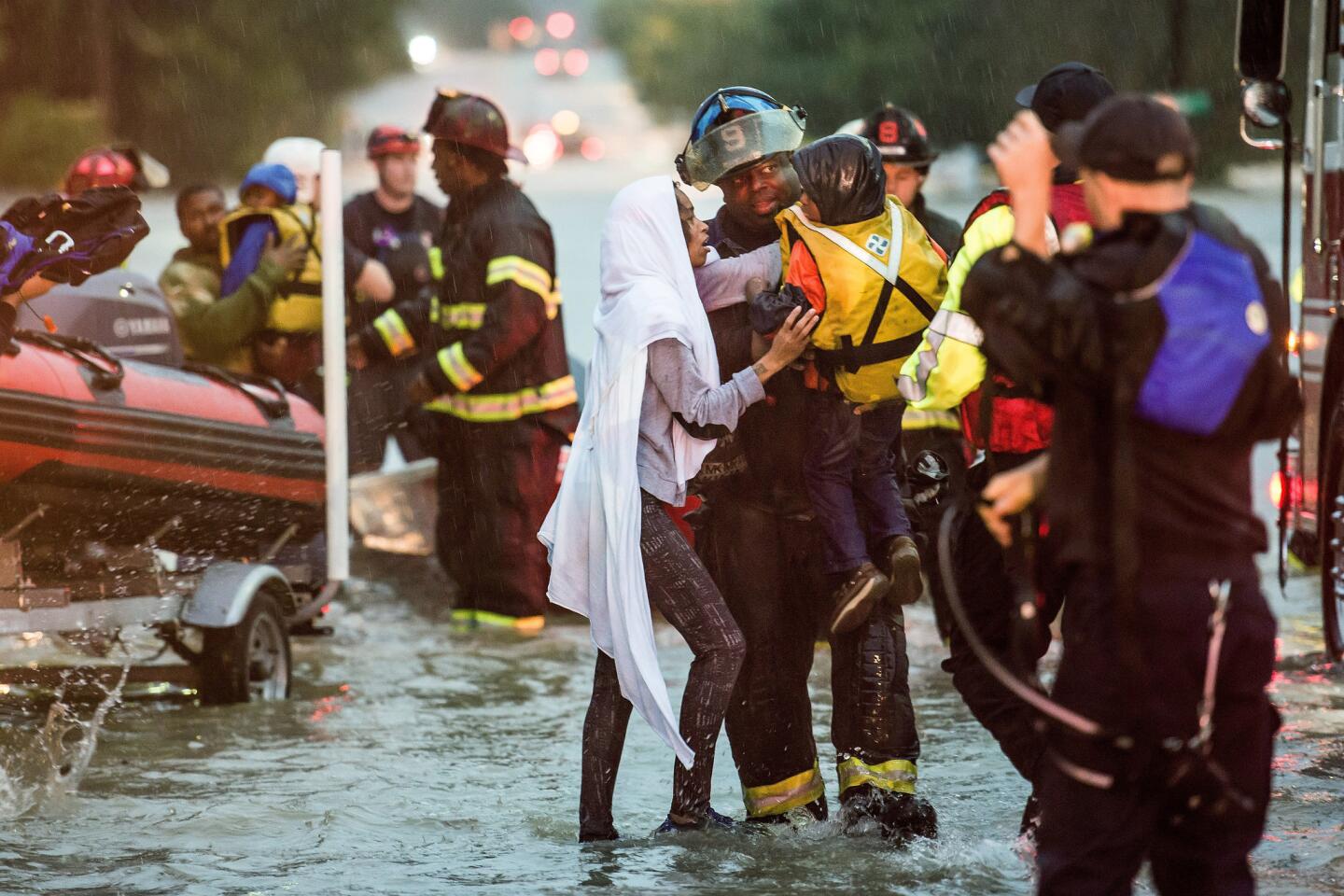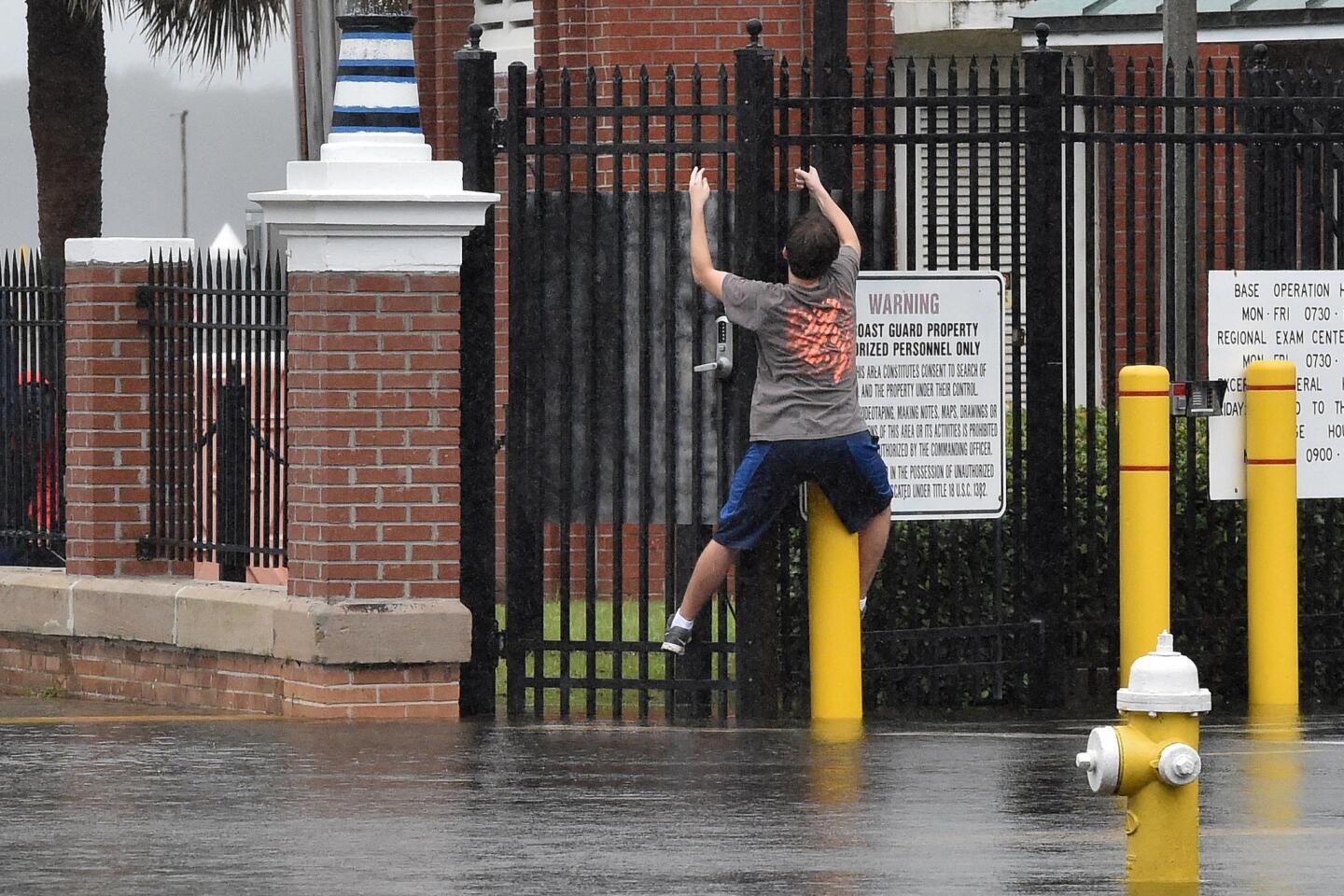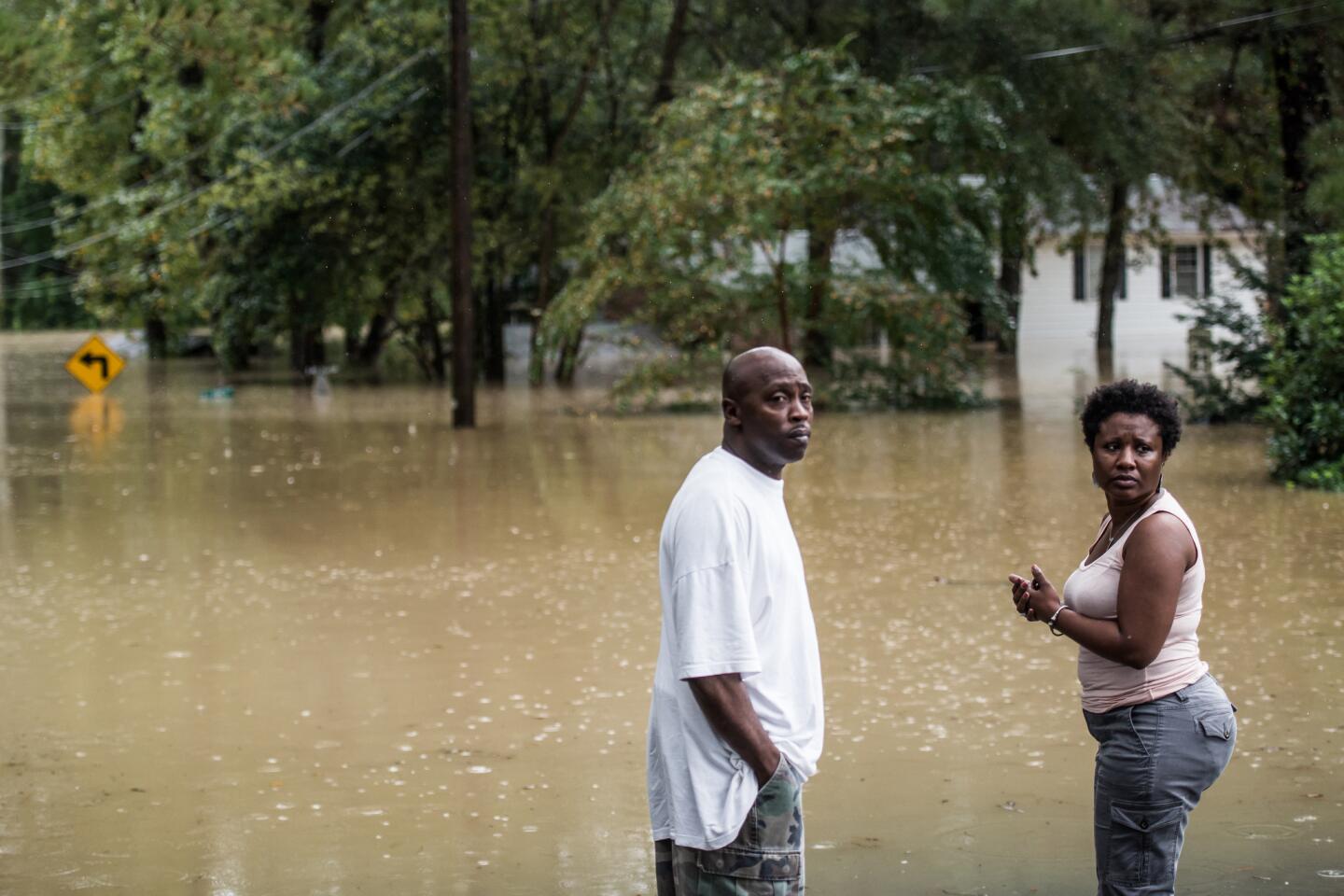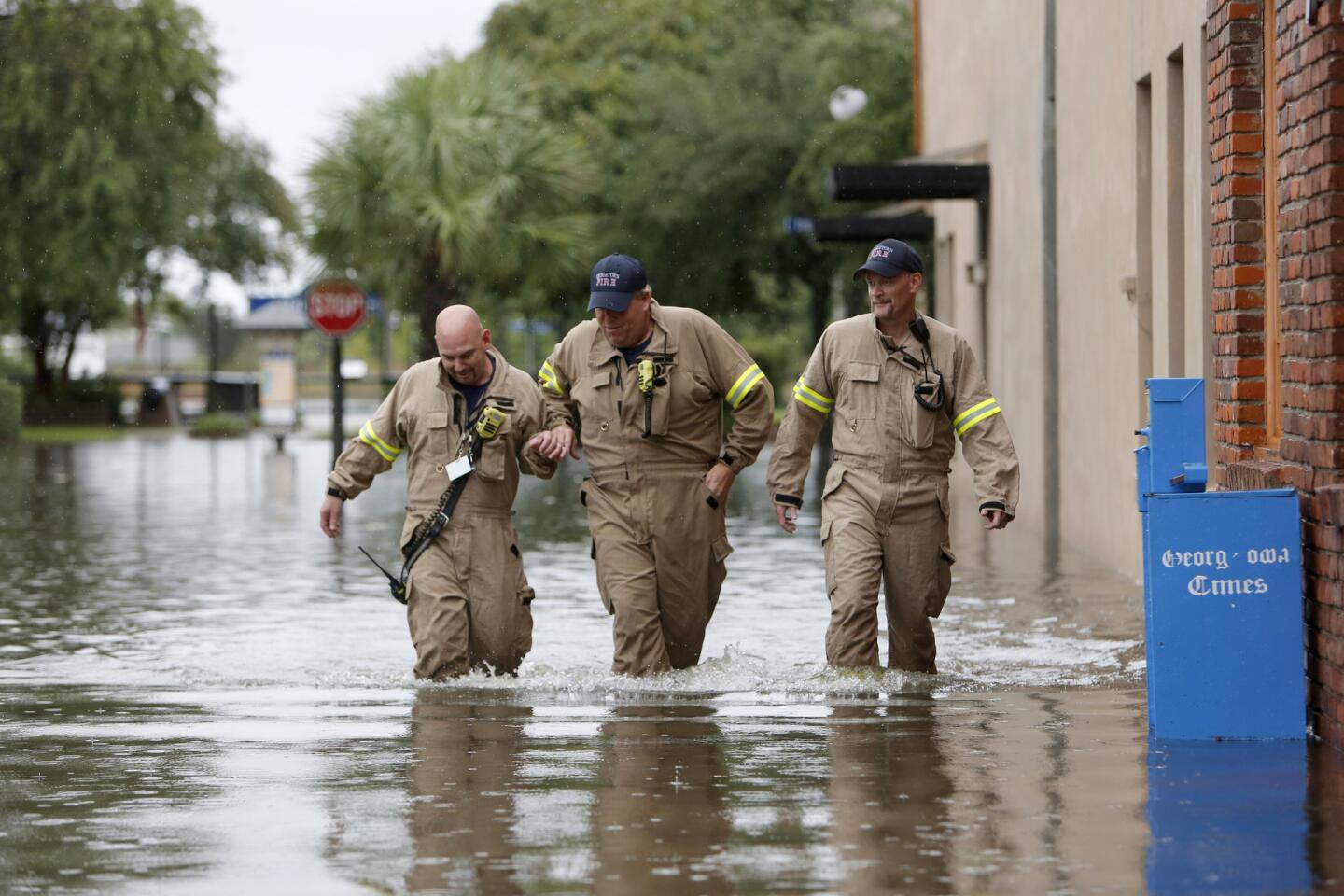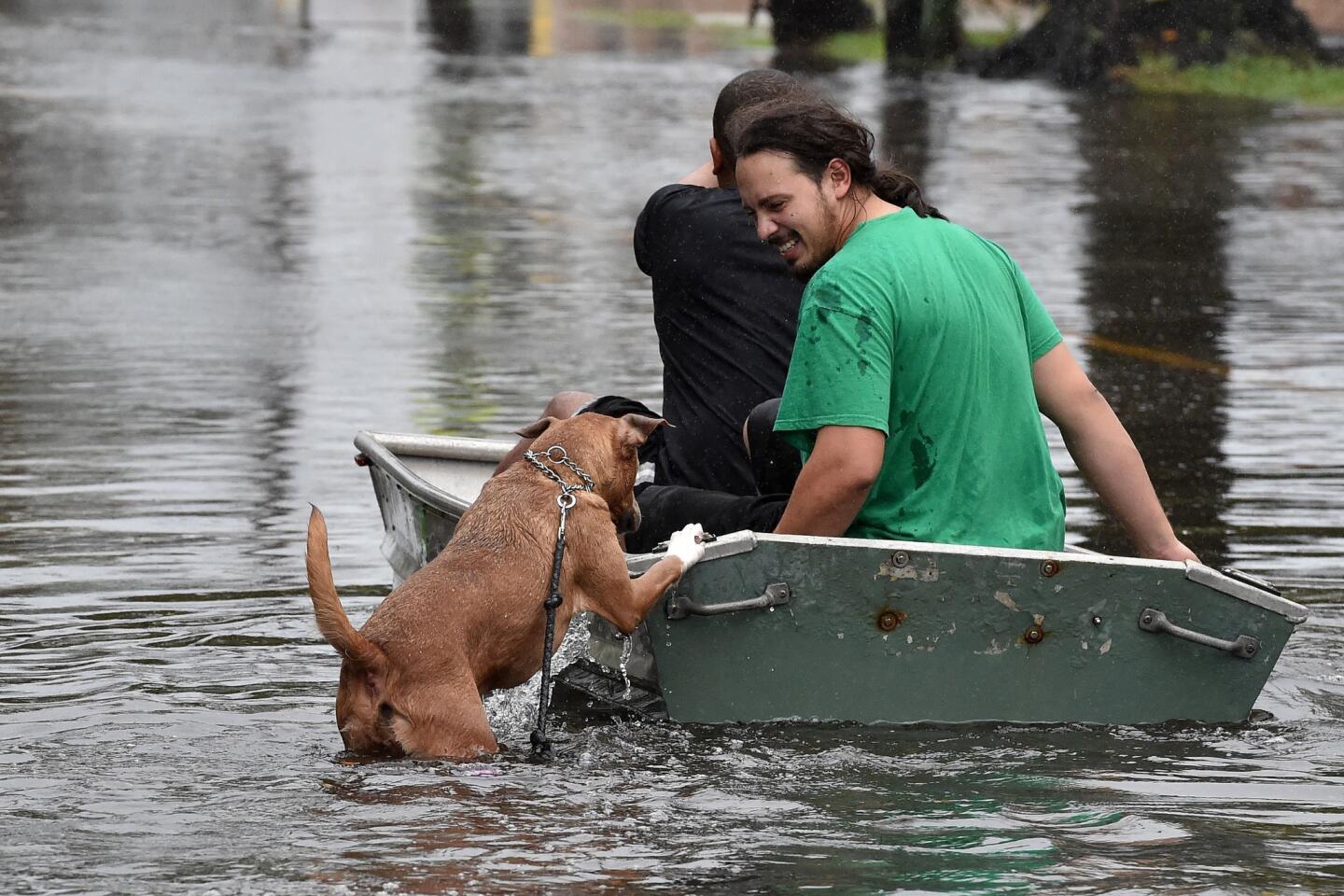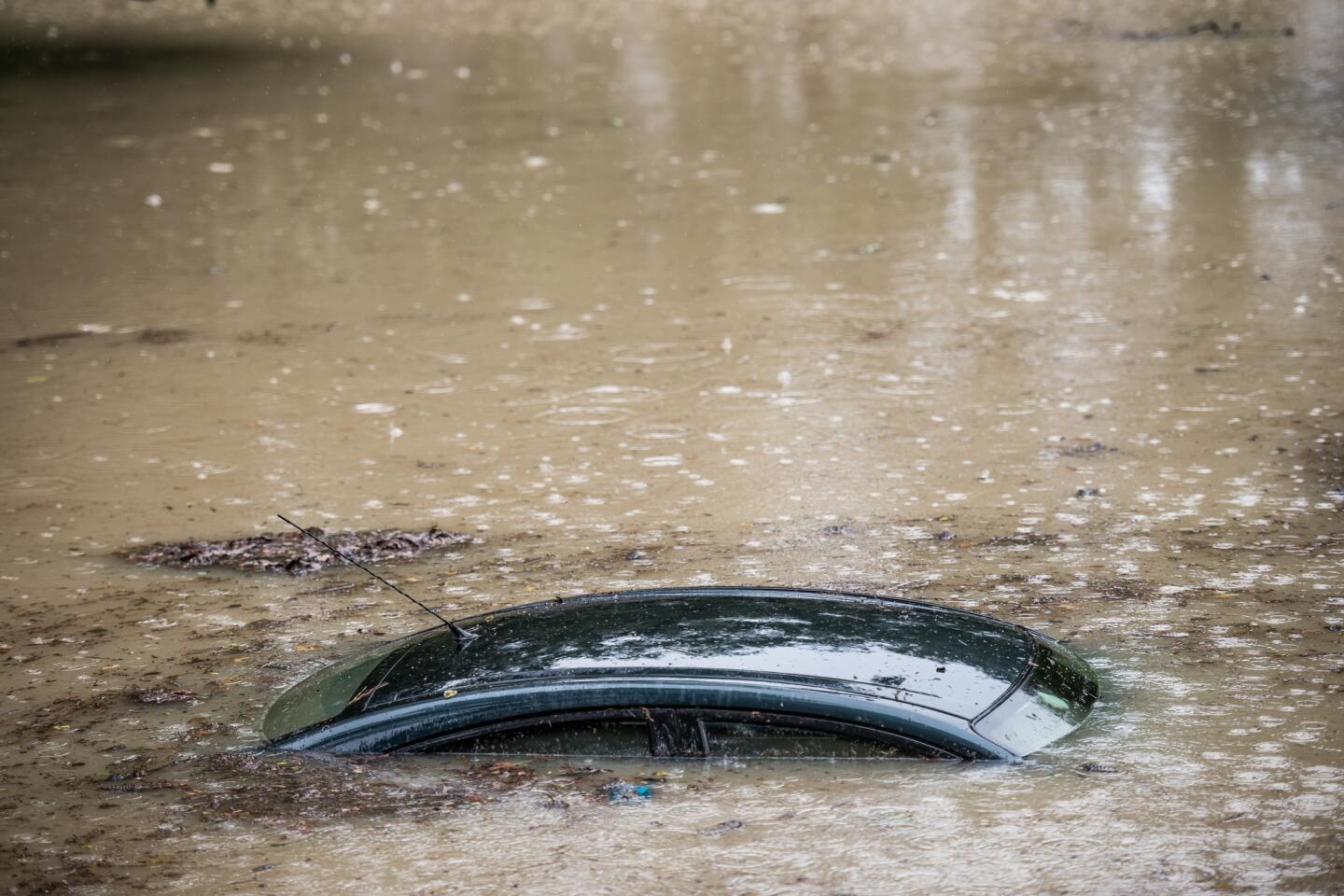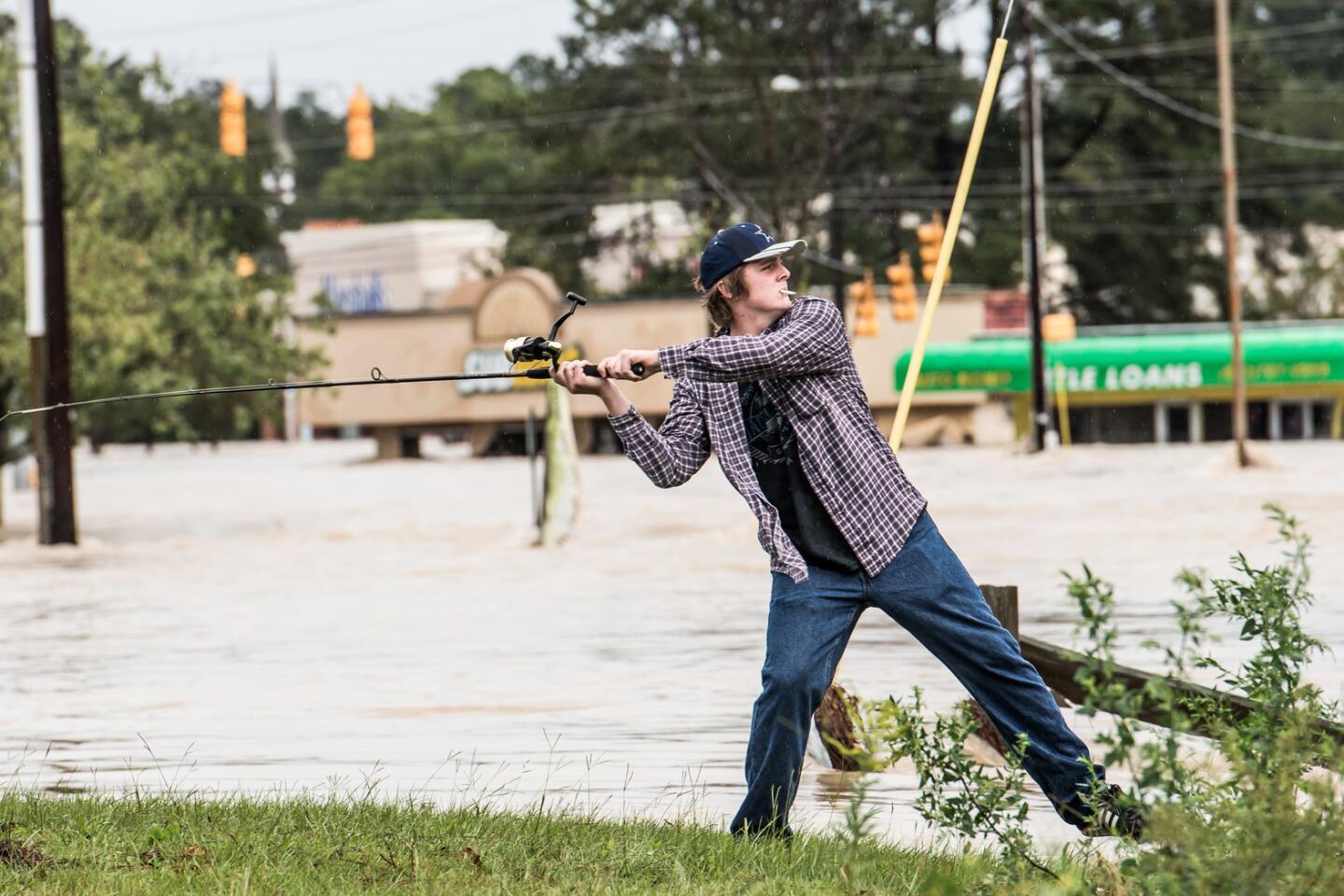Q&A: Does a 1,000-year storm really happen every 1,000 years?
- Share via
When South Carolina officials said the state faced a 1,000-year storm, that meant the type of killer rain that lashed the state only comes around once every thousand years, right?
Well, not quite.
Then why is the South Carolina storm being called a 1,000-year event?
The terms “100-year storm,” “500-year storm” and “1,000-year storm” are standard measures used in weather circles to denote a rare event, like the severe rainfall in South Carolina that left nine people dead, about 40,000 needing clean water and 26,000 without power.
“We haven’t seen this level of rain in the Low Country in 1,000 years,” Gov. Nikki Haley told reporters during a news conference Sunday. “That’s how big this is.”
One of the more common mistakes is to assume that a 100-year flood means something that happens every 100 years, according to Federal Emergency Management Agency, which oversees the National Flood Insurance Program.
“Commonly, people interpret the 100-year flood definition to mean ‘once every 100 years,’” according to the agency. “This is wrong. You could experience a 100-year flood two times in the same year, two years in a row or four times over the course of 100 years. You could also not experience a 100-year flood over the course of 200 or more years.”
Then why even use the term?
One of the biggest uses for the measurement is to help determine the danger of flooding for insurance purposes and to help those who respond to disasters.
How is the measurement calculated?
Technically the measurement is a probability. A 100-year flood means that there is one chance in 100 of a flood occurring in each year. A 500-year flood means there is 0.2% chance of the flooding or rain event occurring each year and a 1,000-year event has a 0.1% chance of happening in any year.
The computation of the probability starts with data collected by gauges that measure rainfall or the flow of streams, explained Jayme Laber, a hydrologist with the Los Angeles office of the National Oceanic and Atmospheric Administration.
The gauges collect “tons of data” over years that can then be sorted into a variety of categories. Rain gauges collect water as it falls; flood or stream gauges collect data as the water flows past.
Using software, the data are then sorted to allow the meteorologist to determine what is typical rainfall in a five-minute burst, or in an one-hour period or any other duration, Laber said.
From those data, meteorologists then extrapolate the probability of a rainfall or flooding event and express it as a number: once in 50 years, 100 years and so on.
Have there been such events in Southern California?
For the Los Angeles area, a 1-in-1,000-year rain or flooding event occurs “pretty regularly,” roughly once a year somewhere in the fairly large region, Laber said. But that doesn’t mean every such event is a disaster.
For example, a 2011 spring storm in Palmdale was a 1-in-a-1,000-year event, he said. The area received about four times its usual daily rainfall, leading to flash flooding.
In December 2014, a “extremely rare rainfall” drenched Camarillo, at times dumping rain exceeding a 1,000-year event, Laber said. At one point, nearly an inch of rain fell over 14 minutes.
What are the details of the South Carolina event?
In South Carolina, the major storm began last week, part of a storm system that dumped more than a foot of rain across the state and soaked several others.
In general, most areas in South Carolina surpassed the threshold for a 1-in-a-1,000-year event, which in Charleston County is 17.1 inches over three days.
Boone Hall Plantation, just north of Mount Pleasant, in Charleston County, reported more than 24 inches of rain through Sunday morning.
Follow @latimesmuskal for national news.
More to Read
Sign up for Essential California
The most important California stories and recommendations in your inbox every morning.
You may occasionally receive promotional content from the Los Angeles Times.
